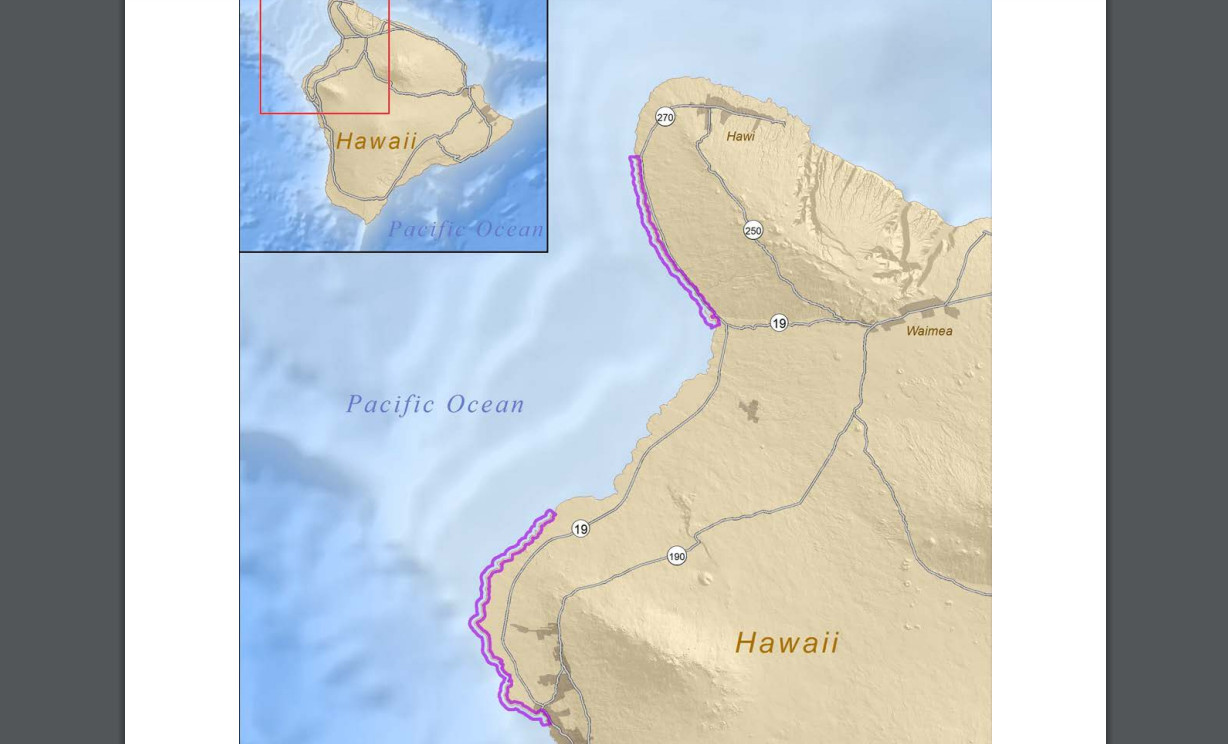(BIVN) – A new Environmental Assessment analyzing the potential impacts of proposed naval special operations training in the State of Hawaiʻi is open for public review.
The U.S. Navy is encouraging the public to review and provide comments on the Draft EA through Dec. 10, 2018.
The West Hawaiʻi shores of North Kohala and Kailua-Kona are shown in a map (above) that plots the training area study.
The United States Naval Special Warfare Command wants to conduct “small-unit intermediate and advanced land and maritime training activities for naval special operations personnel.” According to the Navy:
The proposed training activities consist of training by naval special operations personnel with occasional integration of other USSOCOM components, including U.S. Army Special Operations Command, Marine Corps Special Operations Command, Air Force Special Operations Command, and Joint Special Operations Command. The occasional integration of other USSOCOM components would occur only with NSWC-led training. The proposed training activities broadly fit into three categories: water-base training, land-based training, and air-based training. Water-based training generally includes naval special operations personnel diving/swimming, launching/recovering small vehicles designed to operate underwater (submersible) as discreet activities, or in combination. Water based training may also incorporate inserting and extracting naval special operations personnel or equipment using watercraft as part of a training event and prior to performing a land-based training component. Land-based training would include personnel transiting over the beach on foot, simulating building clearance activities using simulated munitions, in limited areas engaging in high angle climbing, and using observation techniques in a pre-arranged scenario (special reconnaissance operations with military role players). Air-based training would include the use of unmanned aircraft systems (UAS) or aircraft utilizing drop zones or landing zones for parachute or rope suspension training activities. The proposed training would take place in selected coastal nearshore waters and selected shoreline and inland locations throughout the State of Hawaii.
According to the document, the Island of Hawaiʻi would see:
Diver/Swimmer Training Activities: During diver/swimmer training events, trainees would swim or dive to an objective area (e.g., harbor, beach, moored vessel) for up to six hours. During night training, the trainees would use buoys marked with a glow stick (Chemlight) to identify their location to the support staff. Rubber replica weapons could be carried by trainees to reproduce the bulk and weight of the gear the trainee would carry during an actual mission.
Insertion and Extraction Training Activities: During insertion/extraction training events, trainees would be trained to approach or depart an objective area using submersible craft, to include UUV and ROVs, or watercraft (such as jet skis, waverunners, or small boats). This activity trains personnel to effectively insert and extract people and equipment during the day or night. Submersible and surface crafts would have lighting for night training.
The EA looks at air quality, land use-recreation, biological resources, cultural resources, noise, and public health and safety issues.
The Navy says it does not anticipate any adverse effects to historic properties in accordance with the Section 106 Implementing Regulations.


by Big Island Video News7:02 am
on at
STORY SUMMARY
HAWAIʻI ISLAND - Small-unit intermediate and advanced land and maritime training activities would take place along West Hawaiʻi shores, the assessment states.